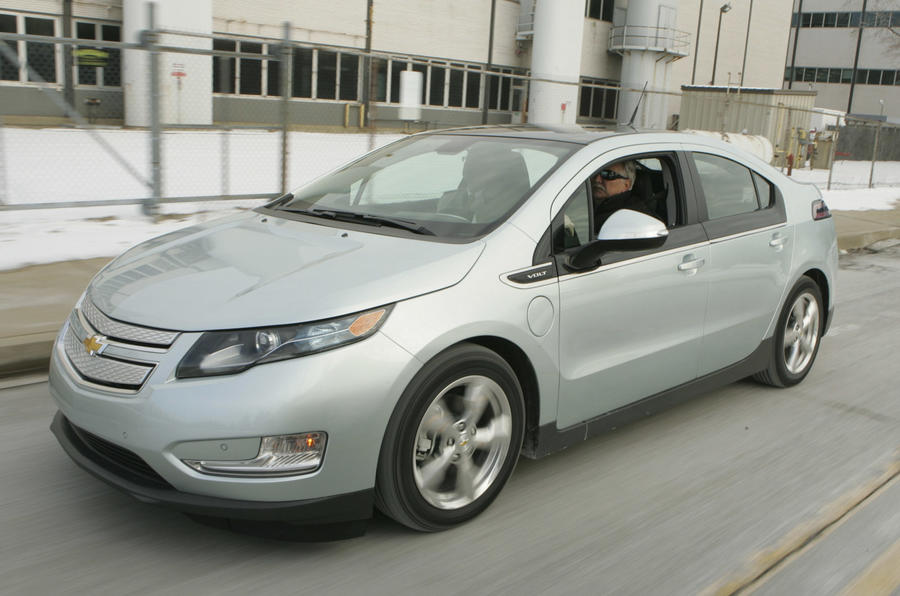What is it?
The revolutionary Chevrolet Volt, a mainstream electric car that goes on sale in the US later this year and hits the UK in late 2011.
Based on the Vauxhall Astra platform, the Volt is a four-seat hatch powered by lithium ion batteries that can be recharged by plugging into the mains, or on the go by a 1.4-litre petrol engine.
GM is confident the Volt will be capable of up to 40 miles' range on a single charge, although accepts that heavy usage - such as climbing or high-speed running - will reduce that.
Although unlike every other EV, fluctuations in range don’t really matter, because the Volt can fire up its petrol engine to ensure there’s always drive to the front-wheels.
The electric motor is rated at 110kW or 150bhp, and delivers a healthy 273lb ft of torque, about the same as a 2.0-litre diesel.
The lithium ion battery pack is water-cooled and heated. Cooling is particularly important, because excess heat can kill lithium ion cells. GM is promising the battery pack will last the life of the Volt, which is interpreted as 150,000 miles.
Given the battery capacity and the Volt’s range, the engineering spec allows for 6000 full charge or discharge cycles, events that eventually will reduce the battery’s storage capacity to 70 to 80 per cent of what it was capable of when new.
What’s it like?
The most significant point is that the Volt is just like a normal hatchback to drive, with the added significant benefit of being very quiet.
We had a short drive on a simple, flat test circuit and found that the Volt steers, rides and handles in a very similar manner to the Chevy Cruze saloon. That means it’s more comfort-oriented than the sportier Vauxhall Astra.
Driving the Volt is very simple. With the ignition on, press a starter button and the dashboard lights up and bings into life, just like a PC. In the centre console there’s a PRND selector exactly where the gear-shifter is on a regular car, and in the footwell are two pedals: accelerator and brake.
Slot the shifter into D and the Volt glides away with no hint of engine or motor noise.
Acceleration is similar to a 2.0-litre diesel-powered hatch, with the benefit of a linear power delivery, which builds speed very smoothly and is helped by the fact that there are no gearchanges to interrupt progress.
To boost performance, there’s a sport button on the dash that increases the flow of electrons out of the battery by 20 per cent. And the effect is noticeable; if you could turn the turbo on a combustion engine on and off, it would be a bit like this.
As the speed rises, the main driver feedback comes from the tyres and suspension. With no engine noise in the background, tyre roar and bump thump from the suspension take over.
Steering is linear and faithful and cornering is accompanied by body roll. The Volt is definitely focused on comfort, rather than sporty handling.
Less impressive is the cabin space. Although the car is based on the Astra platform, its rear legroom feels more like the Corsa's and the headroom is more like a coupe's than a saloon's.



















Join the debate
Add your comment
Re: Chevrolet Volt
I am surprised Mr "Rover P6" has not appeared to tell us all about gas turbines again.
Re: Chevrolet Volt
I'm convinced all this electric business is purely for california.
Re: Chevrolet Volt
I think the trooper would have been amazed if you didn’t have a handgun in the glove box; you were in Texas after all. ;)